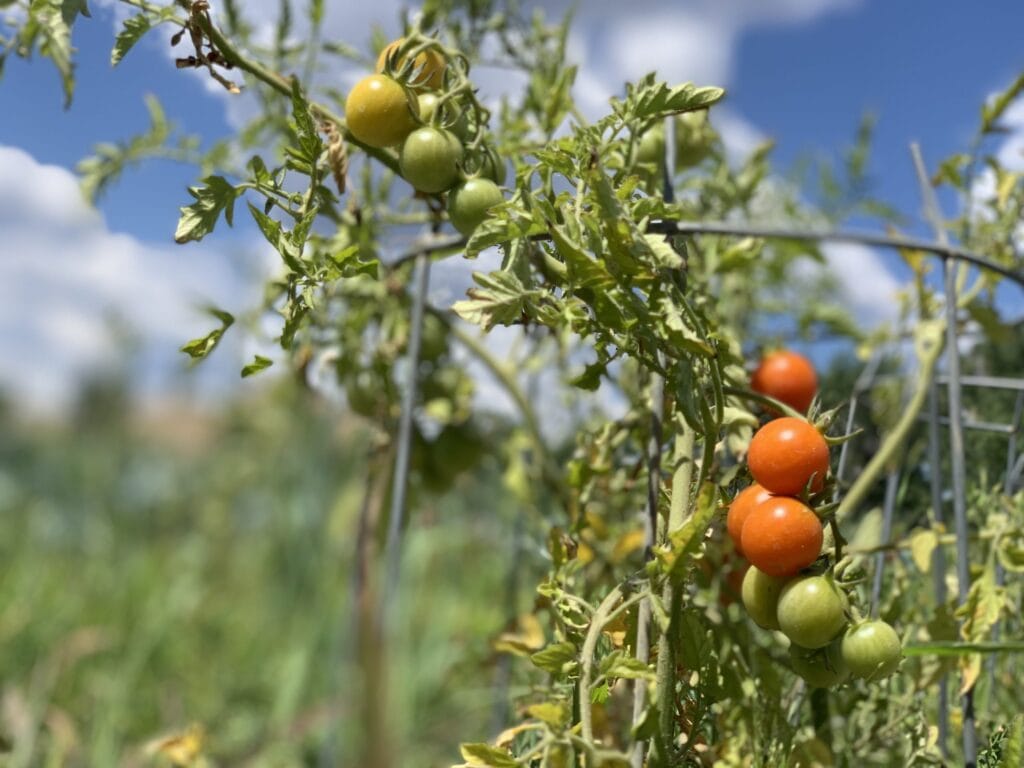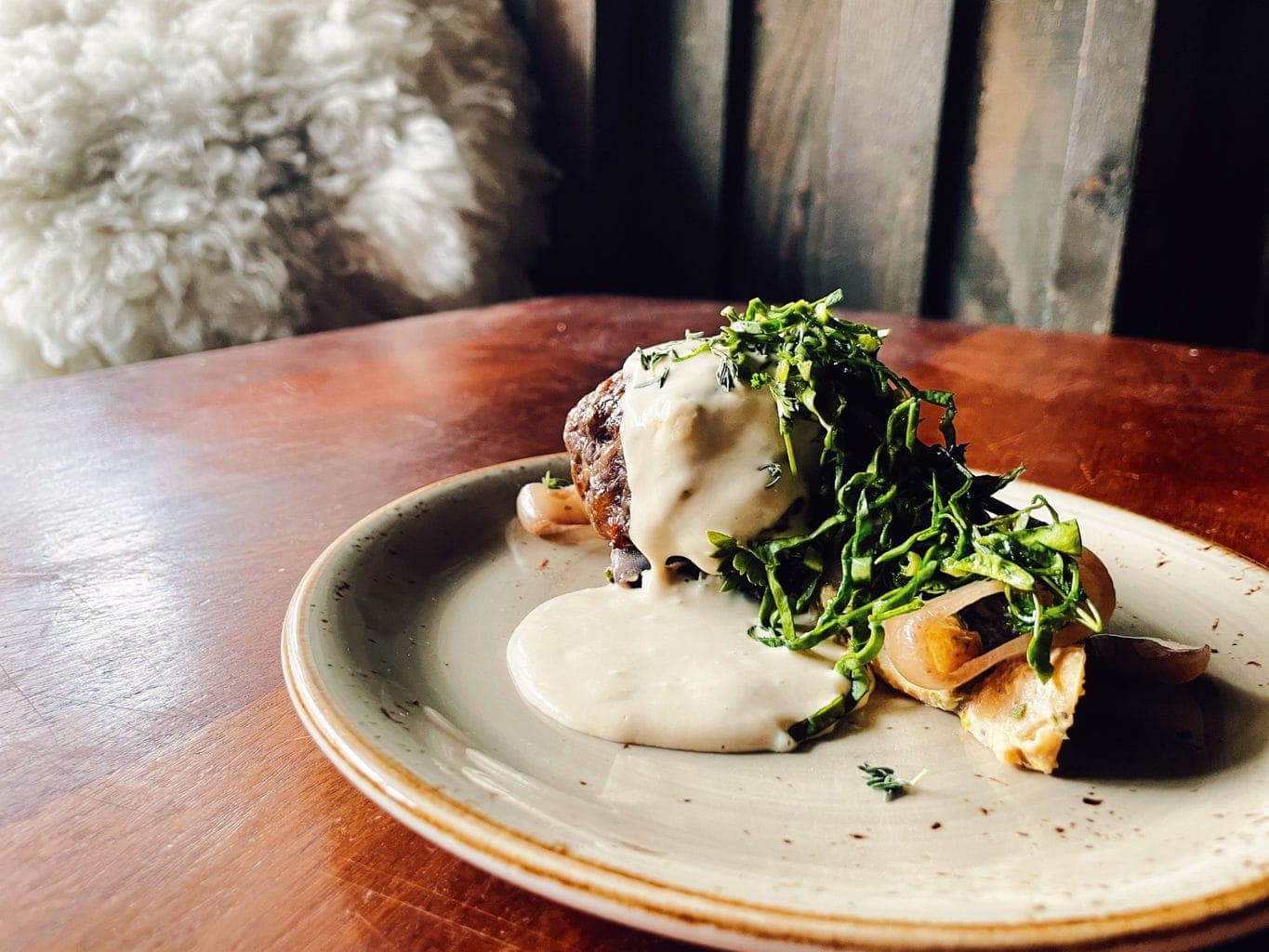
The Black Cat Farm recently planted its tomato plants, so it seemed time to talk with Eric about all things tomato.
Q: How many seedlings did the Black Cat Farm workers plant?
Eric: 2500 seedlings.
Q. How many tomato varieties were planted?
Eric: 20.
Q. Of those varieties, what are your favorites?
Eric: Black Prince, Jet Star, Principe Borghese, Yellow Pear.
Q. How much land have you dedicated to those 2500 tomato seedlings?
Eric: 1.5 acres.
Q. In a perfect world where growing conditions are ideal and all of the tomato plants survive, what is the best possible yields for all of those tomato plants.
Eric: The maximum yield per tomato plant is 10 pounds of fruit. Multiply that by 2500 plants and the best result possible is 25,000 pounds of tomatoes.
Q. In a normal season where no drastic catastrophes occur, what kind of harvest is likely?
Eric: 10,000 pounds or 5 tons.
Note: At this point, Eric digressed to the other nightshade crops recently planted on the farm. Tomatillos are new to the farm. They planted a lot of tomatillo seedlings. He thinks that harvesting a ton of tomatillos is possible and foresees a pork green chili at Bramble and Hare that contains those tomatillos.
Eric also mentioned an additional eggplant variety, Black Beauty, and increased acreage and varieties of peppers. Two new pepper varieties that he mentioned are shishito and Hungarian frying peppers.
Now, but to our regularly scheduled tomato programming.
Q. What gardening practices help grow a delicious tomato?
Eric: One of the main factors for growing tomatoes well is really high soil fertility. Tomatoes are big feeders and really deplete the soil, so you need rich soil at the start.
Early in the season, tomato plants require lots of water, which should be regularly applied at the base of the plants and not from above. Any kind of slow and steady stream will help the water soak deeper into the soil, encouraging the roots to go deeper as well.
Site location is another factor. Tomato plants thrive with the maximum amount of sun. The best location is on the south side of your house, abutting a wall that will reflect heat onto the tomato plants. The west side of your house is also good. The north side is the worse with the least amount of sun available.
For June and July, the objective is to grow big and vigorous plants with deep thick root balls. Stripping off the first set flowers causes the tomato plants to concentrate on root development. While doing so sets back your harvest back one week, it doubles your harvest size.
When the tomato plants are in good shape, the next challenge is to grow fully ripe tomatoes because of the short growing season. Part of this entails limiting the harvest so that all of the plant resources can be directed to a subset that has a better chance to ripen as opposed to a large amount of fruit that might not get there.
Even in July we selectively remove flowers from each cluster. We also regularly remove the suckers (shoots sprouting from between main branches) after the emphasis shifts from growing vigorous plants to cultivating the fruit.
Q. With late snow and cold temperatures, it has been hard to know when to plant tomatoes. Is this a good time to plant or have I missed the boat?
Eric: I would highly encourage you to plant right now. With our short growing season, don’t delay.
Note: Photo by Manjith Kainickara under the creative commons license for attribution 2.0.
